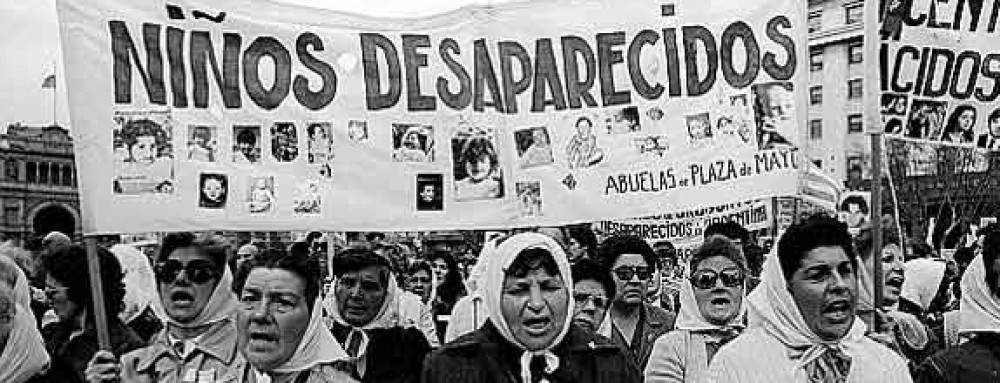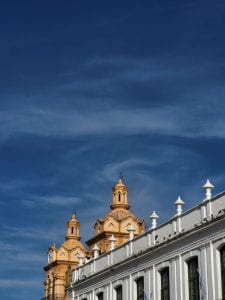“Wingka”
proviene del idioma mapuche de las palabres we- (nuevo) e ingka (Inca), significa que una cosa/persona está relacionada a los conquistadores españoles
We spent the entire day touring Cordoba (also known as Curdoba in the cordobes accent) — learning about the history of the city through its geography. Maybe asides from Mexico City, this is definitely up there as one of the oldest cities that I’ve been to in the Americas, with almost 500 years of rule since the Catholics arrived in Puelmapu.
There’s that old adage that in Europe Americans marvel at things that don’t really seem that old, and that in the Americas Europeans marvel at distances that don’t really seem that far. Sure, it’s normally used as a stereotype to poke fun at one another, but I think there’s a lot of truth in this.
In the US we’re taught from as young as we can remember that the events that shaped this country so much, like the Revolutionary War and the Civil War, happened so long ago that their realities can be dismissed as “a different time”. I think we’re enculturated to perceive an American century like a millennia anywhere else in the world; that is, that we have been especially led to disregard our relevant near pasts as “too long ago to do anything about”.
This becomes particularly evident here in Argentina, where the only mention of the Indigenous Americans who called Cordoba home is in passing with reference to the name of a university park — and they only referred to them by the slur used to describe them!
According to etimologias.dechile.net the word “comechingones” comes from a word from the Sanaviron language, meaning “cave-dweller”. It is intended as a pejorative.
These original peoples call themselves Henia or Kamiare, depending on the region, and inhabited what is now Cordoba prior to the Iberian incursions by the 1500s. Yet, when we discuss the history of Argentina (much like the US and Chile), the story only begins when white Europeans arrived to “settle” or “civilize”. Even the word settle is political — do we really believe that the Europeans just peacefully “sat down” for a rest in these lands, with rifle and bible in hand?
I did some surface-level research on the Argentine genocide against Indigenous Americas, especially in the last 200 years, through the Desert Campaign of 1833. Headed by Juan Manuel de Rosas, Argentine general and former governor of Buenos Aires, the now-independent Argentine state set out to “divide and conquer” the remaining Indigenous communities of the south.
Indigenous groups who did not accept to be subjugated by Argentina or Chile were designated as enemies, and were to be destroyed by the Argentine military. Targeting Mapuches, Rankulches, and Tehuelches, de Rosas led a deadly extermination campaign to secure the “safety” of Argentina in the face of malones, or raids. This would render the region known now as the Pampas accessible to new waves of European settlers who could support the emerging Argentine state into the new century.
These lands were not “blank slates” of abundant land and resources, nor were they full of complacent nations who accepted to be conquered by the Europeans. The colonizers, whether corporate representatives or subjects of the Southern Cone states, came to places like Cordoba and the Tierra del Fuego to exterminate. Mestizaje, or “mixing”, was an accepted alternate route to the primary: either forcefully remove Indigenous communities to another place, or murder their men, women, and children outright.
Argentinian and Chilean companies, fronted by European immigrants, placed bounties on any Selk’nam person following the Desert Campaign. You could present a pair of Selk’nam hands, a pair of Selk’nam ears, or “a complete skull” and be paid a fee for your services. Both countries were complicit in this genocide, and despite investigation, nobody ever paid for their actions.
Instead, we see a part of a continent that best mirrors a place like Italy or Spain in terms of language, art, architecture, cuisine, and ethnicity. These lands have been whitewashed time and time and time again to hide the bloody bricks upon which their foundations lay. I see my Chilean and Argentine kin arguing over the future of their nations as if they are rightly-guided and deserve saving, and all I can wonder is:
WHERE ARE THE BLACK ARGENTINES? WHERE ARE THE MAPUCHE? WHERE ARE THE TEHUELCHE? WHERE ARE RANKULCHE? WHERE ARE THE HENIA AND KAMIARE? WHERE ARE THE SELK’NAM?
Europeans put our Indigenous ancestors and their kin in human zoos to gawk at, thousands of miles away from their homelands in the Americas. Our ancestors — men, women, machi, children — were murdered without question so that European settlers could have enough room to farm wheat and cows for profit. Our language and culture has been and is forbidden to us, and we have been forced into religious systems that try to convince us that our ancestors were “savages” incapable of reason or knowledge, and thus, were incapable of humanity.
These have been, and will always be, Indigenous homelands.
I dream of reparations, I dream of return, and I dream of justice.
MARICHIWEU
“A thousand times, we will overcome!”

